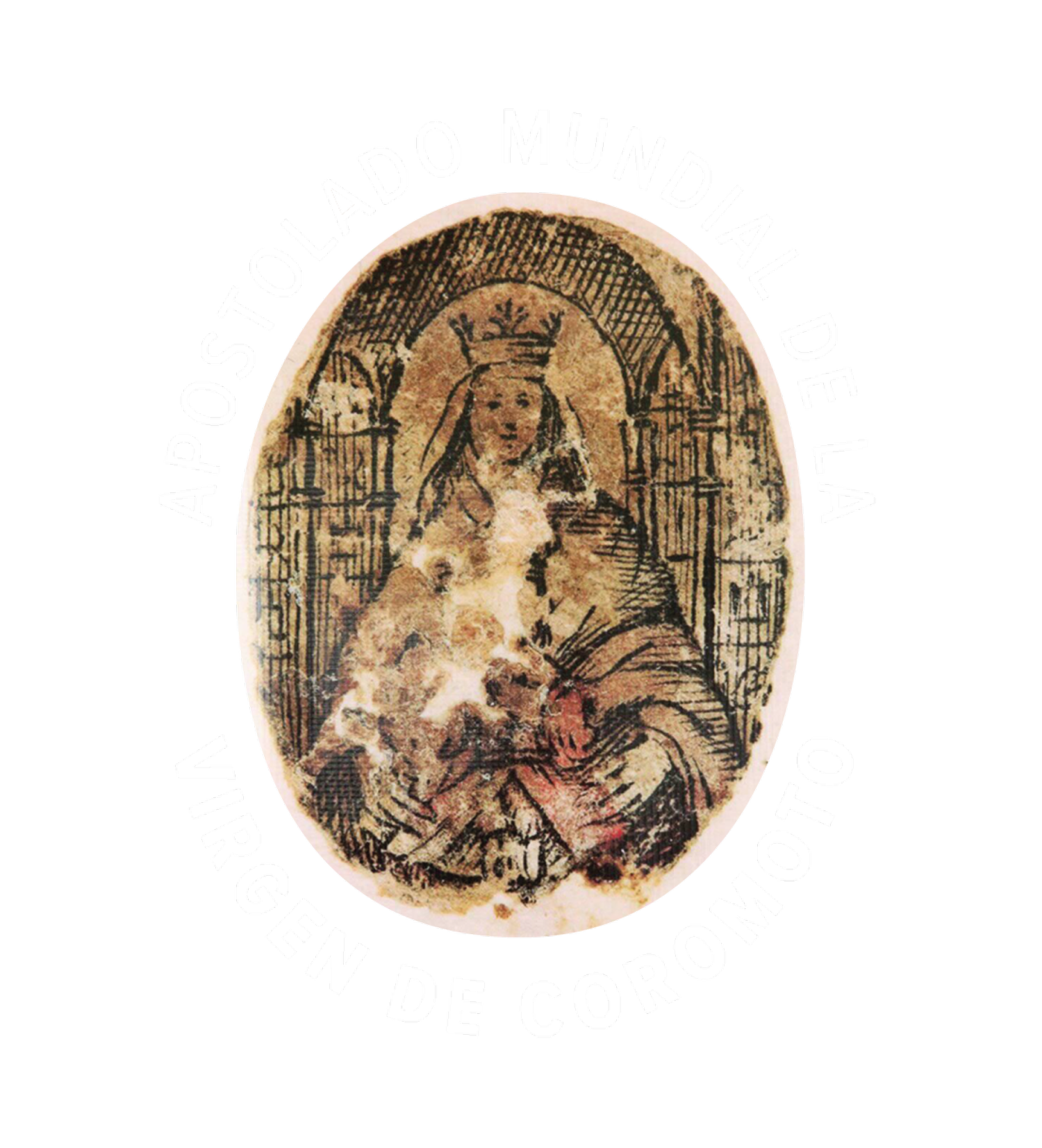
Study of the
Sacred Image.
Study of the Sacred Image.
Since Her appearance there have been attempts to make drawings copying the image that the Virgin left in the hands of the cacique Coromoto.
The first approach to a possible intervention of the relic of Coromoto was requested by the bishop of Guanare, Monsignor Angel Polachini, in 1987, when he requested that an expert in restoration be sent by the Vatican to Guanare. He analyzed it and recommended not to touch it, since the risk of destroying it in the process was very great.
No matter how much the image has been protected, it has not been possible to escape the effects of time and the deterioration it brings with it. This situation was the impetus for the members of the María Camino a Jesús Foundation, based in Maracaibo, to begin a campaign in 2002 to restore the relic of the Virgin with the support of Father José Manuel Brito, rector of the National Sanctuary of the Virgin of Coromoto.
On July 22, 2008 there was a robbery at the Basilica of Guanare, where they tried to take the image of the Virgin of Coromoto. The assailants broke the glass and took the reliquary but miraculously the image of the Virgin fell and they could not take it.
In 2009, at the request of the fifth Bishop of Guanare, Monsignor José Sotero Valero Ruiz, the Venezuelan Episcopate made the decision to allow a conservation treatment in a special laboratory installed in the Sanctuary itself, by the María Camino a Jesús Foundation, headed by José Luis Matheus. A laboratory was installed in the Sanctuary itself and the work began from March 9 to 15, 2009.
The reliquary where the relic had been kept since 1652 had been changed to a new reliquary in 1948 and had remained there since then. The reliquary could not be opened and it was feared that, due to the passage of time, when this happened, it would fade away. When the specialist placed it on the priest's hand, it automatically opened by itself. Undoubtedly, the Mother of God wanted to open in the hands of a person consecrated to God.
When it was opened, it was seen that the image was stuck to the glass. To remove it, it was thought that the process would take 4 days, all with the highest standards of hygiene and care.
To everyone's surprise, this was done in only 18 minutes. The water that was used to detach it was analyzed and it shows that it is completely pure without any acid or base in its composition. The image, very deteriorated, was fractured, had fungus and an oxide stain. Without handling or applying chemicals, it began to peel off on its own. The image was bleached without using chemicals: natural bleaching (PH stabilization). When measuring the pH of the support and container, they found acidity, everything was contaminated, except the image, which remains with a neutral pH.
The Virgin of Coromoto, only allowed herself to be washed in distilled water (pure), in order to avoid the stain that covered her (contaminated - dark, symbol of sin). She who is merciful, asks us to imitate her, to return to holiness through the water of baptism.
The researchers observed that the figure was of a single line and a single density of ink, and that the pigments were not adhered to anything; on the contrary, at a certain distance, small strips of fibers can be distinguished that make the outline of the Virgin and seem to float. There is a weave of apparent reeds at the back of the image of the Virgin. Behind as background of the image what is seen is the interior of an indigenous hut. The child Jesus is seated on the lap of the Virgin with an indigenous crown. The painting is made in a single stroke. In the lower part of the relic, the hands of the Virgin can be seen surrounding the Child Jesus.
It was also found that, the eyes of the Virgin measure less than 1 millimeter (approximately 2 microns), and in them the presence of the iris is found as well as all the characteristics of a human eye. Under the light of the microscope, the ocular orb, the tear ducts, the ocular orb, the lacrimal duct, the iris and a small point of light in it. When studying the left eye of the Virgin in depth, it was possible to observe the images of human figures with indigenous characteristics.
The most surprising of the process is the comment of the two restorers Pablo Enrique González, Nancy Morella Jiménez and the chemist specialist in paper Pía Rodríguez. We were simply instrumental; the image was restored on its own and in the time granted by the Bishop. They concluded that the traditional image of the Virgin of Coromoto, notably European, differs from the printed testimony left in the hand of the cacique of the Cospes, according to Pablo Gonzalez, member of the restoration team.
The Holy Relic has been miraculously preserved and was miraculously restored.
In 2017 until today, under the direction of Monsignor José de la Trinidad Valero, the Asociacion Civil Coromoto 1652, began some new studies of the image that continue to be carried out.
The Virgin in her apparitions, has only left two material testimonies in the whole world, the first in Mexico City in the Tilma of San Juan Diego, Our Lady Empress of America, La Morenita, La Virgen de Guadalupe in 1531 and the second in Venezuela to the Cacique Coromoto and his family in 1652.

